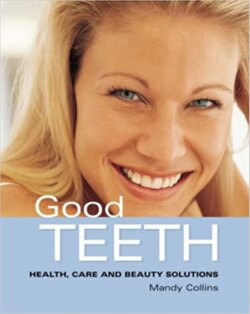Читать книгу Good Teeth - Mandy Collins - Страница 11
На сайте Литреса книга снята с продажи.
Choosing a toothbrush
ОглавлениеPart of effective brushing is having a good toothbrush. Many people think that to do the job properly they need a good, hard brush, but in fact, all they are doing with a hard brush is damaging the enamel of their teeth and bruising their gums.
There are basic requirements for a good toothbrush: its head should not be longer than 20mm (0.8in). It should also have nylon bristles that are medium-soft rather than hard, and its tips should be rounded. While it may seem unimportant, a comfortable grip makes a huge difference. If your hand slips while brushing, you can injure your gums or palate, so it’s worth finding a brush that is both comfortable to hold and unlikely to become slippery when wet.
Another option is the power or electric toothbrush: most dentists tell you that advances in this area have revolutionized how well we are able to brush our teeth at home. Power toothbrushes clean your teeth much better than you ever could, and are very gentle on the gums. Some people might find the sensation a little strange at first, as they vibrate fast, but once you’ve been using a power toothbrush for a while, a manual toothbrush simply won’t seem to do the job well enough.
Power toothbrushes have been scientifically proven to modestly reduce plaque, gingivitis and secondary gum disease, which make them a good bet. They leave your teeth feeling fresher, smoother and cleaner than a manual toothbrush would. Remember, however, that they do not take away the need to have your teeth professionally cleaned by an oral hygienist as tartar cannot be effectively removed with either a manual or power toothbrush.
If you decide a power toothbrush is for you, here’s a valuable tip: don’t switch it on until it’s in your mouth, or you will be mopping up toothpaste splatters on every surface in your bathroom! Also avoid using tooth-whitening toothpaste with an electric toothbrush; the combination is too abrasive and you may damage your teeth’s surface enamel.
Electric toothbrushes are expensive and this is a major drawback for most people. The initial outlay is steep, but then it’s not necessary to buy one for every member of the family. Most people buy one brush for the family, plus a multipack of refill heads: these usually come in packs of four, and each head has its own marker and colour. Each family member then simply puts on his or her own toothbrush head when they want to brush their teeth.
There are excellent electric toothbrushes on the market; find out from your dentist which brand is best, if this is something you would like to try. Whatever toothbrush you choose to use, remember that it won’t last forever. Some toothbrushes have coloured bristles that fade to white when it’s time to get a new one; otherwise, a good guideline is to buy a new brush every six weeks, or more often if it’s starting to look worn. Note that your toothbrush is a weapon for fighting plaque build-up and oral disease, so it’s vital that you get the best possible brush on the market.
SELECTING TOOTHBRUSHES
WHAT TO LOOK FOR:
• The head should be no more than 20mm (0.8in) long.
• The nylon bristles should be medium-soft.
• The bristles should have rounded tips.
• The grip should be comfortable and nonslip.
BRUSHING TECHNIQUES
Hold a toothbrush at 45 degrees to the chewing surfaces of your teeth; brush in a gentle circular movement.
Don’t forget to brush behind your teeth to remove plaque.
Brush the chewing surfaces of your molars with extra care.
If you wear braces, an interdental brush will allow you to get in behind them.
